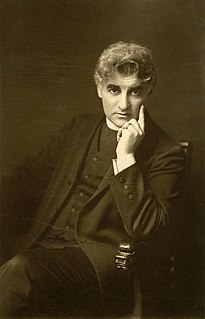
David Belasco was an American theatrical producer, impresario, director, and playwright. He was the first writer to adapt the short story Madame Butterfly for the stage, and he launched the theatrical career of many actors, including James O'Neill, Mary Pickford, Lenore Ulric and Barbara Stanwyck. Belasco pioneered many innovative new forms of stage lighting and special effects in order to create realism and naturalism.

George S. Barnes, A.S.C. was an American cinematographer active from the era of silent films to the early 1950s.

John Francis Seitz, A.S.C. was an American cinematographer and inventor.
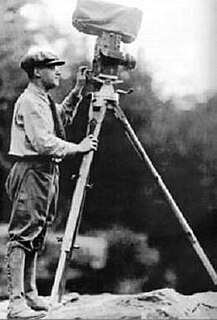
Joseph Ruttenberg, A.S.C. was a Russian-born American photojournalist and cinematographer.

Arthur Edeson, A.S.C. was a film cinematographer, born in New York City. His career ran from the formative years of the film industry in New York, through the silent era in Hollywood, and the sound era there in the 1930s and 1940s. His work included many landmarks in film history, including The Thief of Bagdad (1924), Frankenstein (1931), The Maltese Falcon (1941), and Casablanca (1942).
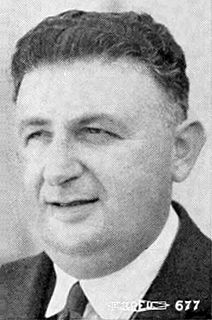
Karl W. Freund, A.S.C. was an Austrian cinematographer and film director best known for photographing Metropolis (1927), Dracula (1931), and television's I Love Lucy (1951-1957). Freund was an innovator in the field of cinematography and is credited with the invention of the unchained camera technique.

Robert Zigler Leonard was an American film director, actor, producer, and screenwriter.

Tony Gaudio, A.S.C. was an Italian-American cinematographer and sometimes is cited as the first to have created a montage sequence for a film.
Oscar Shaw, was a stage and screen actor and singer, remembered primarily today for his role as Bob Adams in the first film starring the Marx Bros., The Cocoanuts (1929). United States census records show that Shaw was already working as a stage actor in 1910, while still living with his mother, brother, and stepfather.

Million Dollar Mermaid is a 1952 Metro-Goldwyn-Mayer biographical musical film of the life of Australian swimming star Annette Kellerman. It was directed by Mervyn LeRoy and produced by Arthur Hornblow Jr. from a screenplay by Everett Freeman. The music score was by Adolph Deutsch, the cinematography by George Folsey and the choreography by Busby Berkeley.
Ernest Jacob Haller, sometimes known as Ernie J. Haller, was an American cinematographer.

Sally Long was a dancer and actress.

Hessy Doris Lloyd was an English–American actress of screen and stage. She is perhaps best known for her roles in The Time Machine (1960) and The Sound of Music (1965). During her career, Lloyd appeared in two Academy Award winners and four other nominees.

J. Roy Hunt born John Roy Hunt was an American motion picture cameraman and cinematographer. His career began around the time of World War I and continued to the 1950s. Hunt served as director of cinematography on numerous films, such as Beau Geste, A Kiss for Cinderella, Flying Down to Rio, and She.
Charles G. Clarke ASC an American cinematographer who worked in Hollywood for over 40 years and was treasurer and president of the American Society of Cinematographers.

Lucien Andriot ASC (1892–1979) was a prolific French-American cinematographer. He shot more than 200 films and television programs over the course of his career.
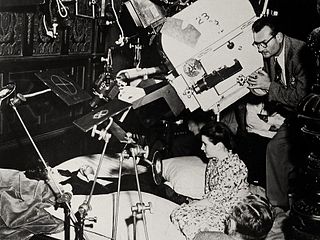
Ray June, A.S.C. was an American cinematographer during the early and classical Hollywood cinema. His best-known films are Babes in Arms and Funny Face.
Adrienne D'Ambricourt was a French-American actress of the silent and sound film eras. She was born in Paris, and emigrated to the United States after the end of World War I.
Oliver T. Marsh was a prolific Hollywood cinematographer. He worked on over eighty films just for Metro-Goldwyn-Mayer alone.
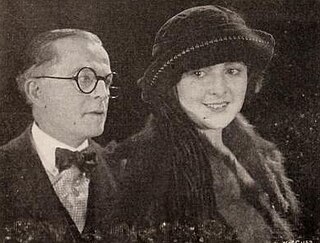
At the Stage Door, also known by its working title Women of Conquest, is a 1921 silent American romantic drama film directed by Christy Cabanne. It stars Billie Dove, Huntley Gordon, and Miriam Battista, and was released on December 11, 1921. The film gives a glimpse into the behind-the-scenes reality of life in the New York theater, as seen by a small town girl trying to make it in the big city. The picture received mixed reviews. This was Dove's first time on film, having moved over from the Ziegfeld Follies.














